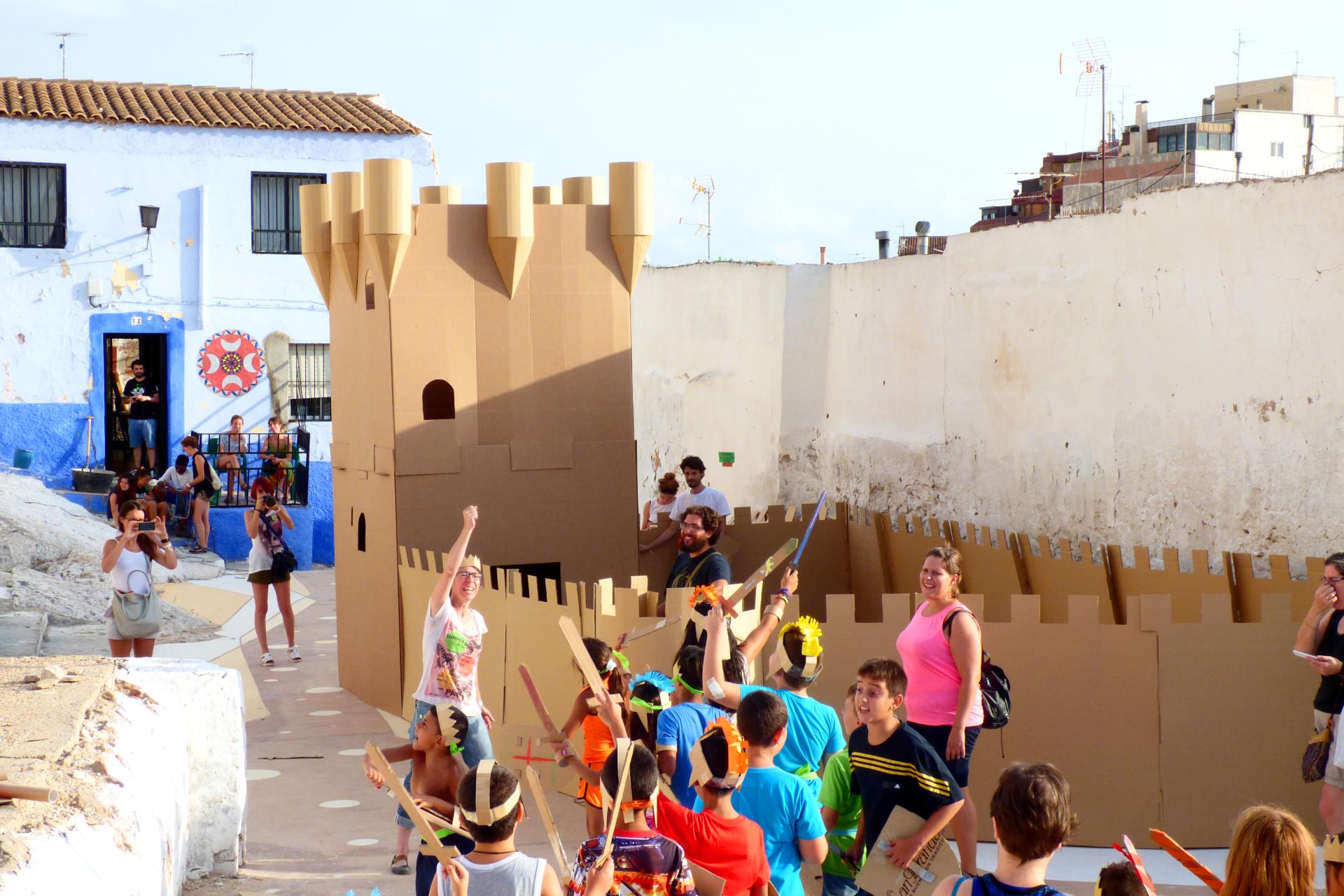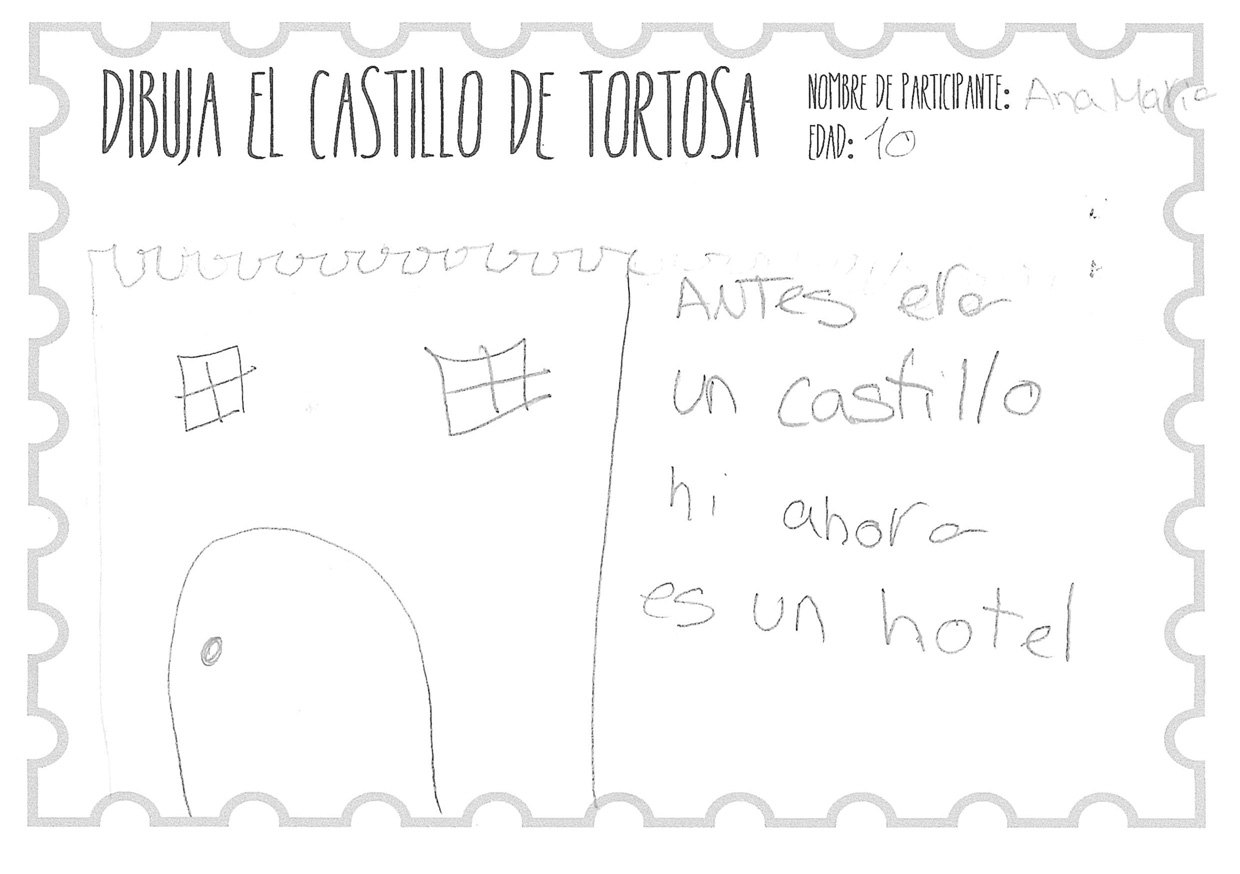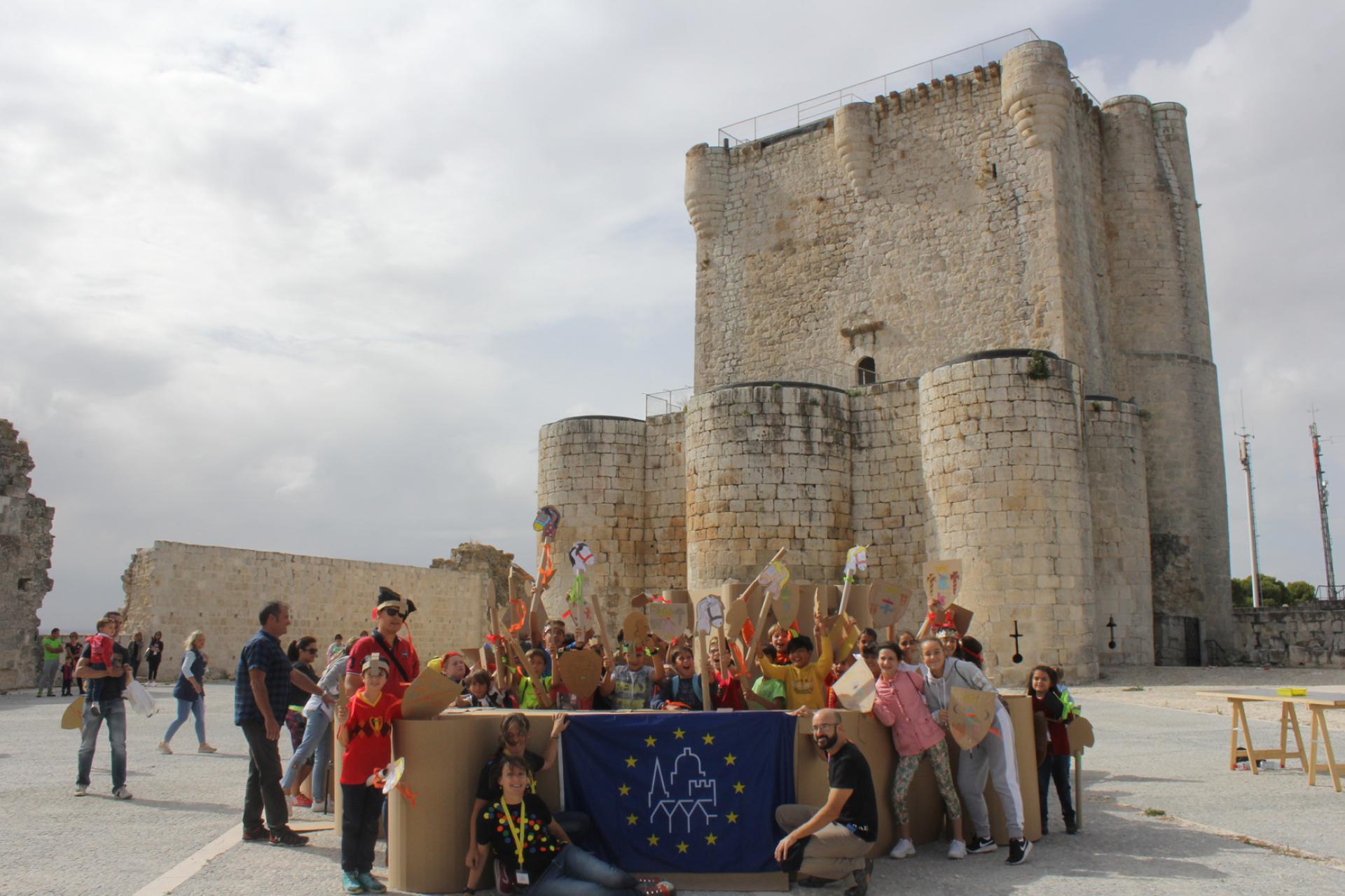HA del castillo!!
Basic information
Project Title
Full project title
Category
Project Description
HA del castillo! is a project that allows us to work on depopulation issues in our rural areas and our heritage through play. A didactical project aimed at young population which results will serve for the implementation of the citizens heritage value (without focusing interest in tourism exploitation) because it must be addressed in a transversal way, and helps to through know that the monumental heritage can be positioned within the neighborhood in which they are enslaved through their memory!
Geographical Scope
Project Region
Urban or rural issues
Physical or other transformations
EU Programme or fund
Which funds
Description of the project
Summary
The historic neighborhoods located on the slopes of the defensive buildings of the cities have often been excluded from urban and social advances. These old towns have often been excluded from urban and social advances, suffering a process of emptying and social degradation (unhealthy housing, few public services, non existent facilities, scarce public services and low incomes) undergoing a process of emptying and social degradation. On the other hand, castles that top the majority of Spanish populations continue to be the main focus of tourist attraction, thus creating a physical and social barrier between the two spaces, historically related. This defensive mophology is repeated in many of the European countries.
Focused on children and with the intention of making public in a playful way their immediate environment, and the unprotected or lacked of interest areas, we have created a cultural and pedagogical program developed around cultural assets within from a place at risk of social exclusion, making it belong to them and inviting the rest of society to be interested in that historically rich neighbourhood of life. Through play and active exploration, the project sensitises participants to the social, economic and citizenship aspects of the historical architecture around them.
The initiative arises from the fact that Therefore, it is intended to develop a cultural pedagogical action around castles in places at risk of social exclusion, capturing the attention of the youngest and inviting the rest of society to be interested in these neighborhoods historically rich in life. The ultimate goal is to establish mechanisms that allow citizens to approach the heritage that surrounds them, thus ceasing to be mere passive spectators before the historical element. Also reveal the social processes which have connected the spaces and created social (and physical) barriers between them.
Key objectives for sustainability
The project is developed in neighborhoods at the bottom of the historic fortifications that crown the towns. These districts, due to their orography and inherited urbanism, systematically have a series of problems of complicated solution.
The characteristic of these neighborhoods is the difficult to access due to insurmountable architectural barriers, such as the slopes from their narrow streets. As the transportation encounters access problems, sanitation and garbage collection services as well. These are neighborhoods that lack sanitation infrastructure. Other types of supplies are in many cases depleted, resulting in homes not suitable for the regulations of habitability and health. In terms of the SDGs, they are far from being "sustainable cities and communities" SDG17.
In terms of social and educational data, they present one of the low income rates, as well as high abandonment of the educational system by children under 16 years old, one of the challenges that SDG 4 tries to achieve.
All these characteristics show that the neighborhoods that concern us are conducive to suffering the problem of social exclusion. These are conditions that push a systematic abandonment of the area closed from the fortress, which in many cases can become a ghetto. This reduction in inequalities highlighted by SDG 10 is what this project aims to achieve through the historical place as a tool for social inclusion.
The proposed project aims to propose strategies and establish mechanisms that allow citizens to approach the heritage around them, increasing the citizens involvement whose role would cease to be, as usual, that of mere passive spectator before the patrimonial element visited. In addition, through this appropriation experience of the "heritage asset", an empowerment of the neighborhood (of its inhabitants, most vulnerable groups) is reached front other neighbors, revaluing their spaces, their history, their feeling of belonging.
2022 Year of Heritage and Sustainable
Key objectives for aesthetics and quality
With the willingness to use creativity, architecture, culture and heritage as tools for social inclusion, and with the maximum purpose of seeking the awareness of the population for their heritage, we developped the project "HA del castillo!! History and Social Action around the Spanish fortresses”.
Encouraged by the specialized teaching team, the experience becomes a true participatory time for citizens where observation, reflection, manipulation, criticism and expression are combined. An project where the capacities of the youngest are cultivated by developing the learning of design and heritage in our cities and cultural traditions. On the other hand, This is an educational activity (playful time), where we promote teamwork, organization and development of manual skills. Developping a critical spirit in relation to their environment, responsibility, citizenship and respect for others are encouraged.
We have valued certain premises in working with citizens such as learning the values of the game and the reuse and recycling of commonly used material. That is why the proposal, made in more than 15 locations throughout Spain, has been made with recycled materials, therefore, a key fact to achieve educational products produced in a sustainable way: recycled cardboard.
For all this, achieving the 3R(reduce, recycle, reuse material in principle disposable (large format cardboard)
Generosity and reciprocity created from an element made by them and to share with their family and friends. A unique aesthetic from an everyday element.
Transversality: possibility of relating this activity with other activities and initiatives.
And of course, as a central objective of the work we highlight the reflection and socialization so that the importance of Heritage is understood, specifically the closest heritage, and thus to cultivate the capacity of transmitter of young people in their social and family environment, to avoid social segregation achieving contemporary lifestyles
Key objectives for inclusion
As established by the Budapest Convention (2011) with World Heritage and the Faro Convention (2005), we highlight the five C's (increase Credibility as a representative and balanced testimony / ensure the effective Conservation of assets / strengthening of Capacities in order to facilitate understanding / Communicate the knowledge that the public has of the heritage and / reinforce the role of the Communities). So we extracted them as strategic orientations and we collect them for the action plan in our project.
HA del castillo ! proposes strategies and establishes mechanisms that allow citizens to approach the heritage that surrounds them, increasing the involvement of citizens whose role ceases to be, as usual, that of a simple passive spectator before the historic architecture visited. We develop teaching dynamics and strategies around the cultural heritage built following the guidelines of the "National Plan of Education and Heritage" by the Institute of Spanish Cultural Heritage (IPCE).
It is conceived as a series of participatory and pedagogical-cultural actions around the monument in places at risk of social exclusion. Through large representations (designed by the neighbors and visitors) in recycled cardboard of the fortresses, these neighborhoods (with social segregation) are approached to the public, investigating under a prism of architectural, sociological and urban participation. The perception of these neighborhoods is improved; accessibility is achieved by all to these spaces and on the other, a affordable common action and immediate access for all.
The replicability of the project is demonstrated in the more than 15 locations carried out throughout Spain. As we said, it is possible in any European country with similar geomorphology.
Results in relation to category
The italian sociologist Francesco Tonucci said "we must work to make the city more suitable for children, and then it will be suitable for the elderly, the disabled and adults in general". The city, specifically, neighborhoods are places where we socialize, we interact, and where we have contact with others beyond our usual space of comfort, our houses, and it is not always a comfortable space for play and for their adventures.
From the experiences lived and the data obtained throughout the 18 months of work, it has been possible to verify that the patrimonial asset is an effective tool for social cohesion, sustainability and community design. Its usefulness is to know how to position it within the neighborhood in which it is located through the memory and collective identity of the neighbors.
The didactic, sustainable and participatory use of heritage assets should excite their recipients, who should enjoy discovering their history, their heritage, and generating the different overlapping readings as the only way to achieve total accessibility of it.
How Citizens benefit
It is not an easy task to actively involve the civil collective (Faro Convention, 2005). They are a group that is not always motivated, not necessarily professional and often ignorant. But without society and its inclusion in the mechanisms of action, strategic change would not be possible to achieve better coexistence by creating more beautiful, sustainable and inclusive places. That is why it is necessary to provide tools for the interest in transformation. The enhancement of heritage and its safeguarding is achieved through heritage education. Because « you cannot value what you do not know ».
At first, we held interviews with local administrations and with cultural and neighborhood associations, (participatory process) drawing conclusions from the appreciation of the society towards their neighborhood, its historical constructions, impy and empathy. Participation on the urban uses of those neighborhoods that surround the monument occupying the hillside, demography, flows, equipment ... and the index of knowledge and visits by tourism and the rest of the population/visitors. We expanded the information of the project and requested the completion of an online questionnaire, the results of which would serve as a subsequent selection tool.
In order to approach the reality of each interested population, a closed questions series were designed, and this allow us to know the particularities of the population. Beyond the general data, we focus on the physical relationship of the population with the castle or historical architecture and the old town around. Both responses were key to determining which populations fit the project profile. The reflections were narrated, but the documentation that remains of the project is basic to continue making it grow once the streets have been emptied (after the participatory action).
So far the proposal has been done, we generate documentation to illustrate it. But this project has a great human component, of in
Physical or other transformations
Innovative character
An exciting project of didactics of the patrimonial assets that implies, through the participation of children, the citizenship of different cultures, social and economic strata within a time of play, with the intention of making known in a playful way their immediate environment. It seeks to sensitize the local population to their heritage, favoring the expansion of the notion of heritage and the appropriation of it.
To this end, it has been endowed with a project that allows to expand the notion of heritage, not limited only to the monumental, related to the traditional professions, architecture, archaeology, crafts, etc., and developing modes of communication and expression.
All this providing the reading tools to understand the city, the landscape and urban mutations, in an original, playful and participatory way.
Learning transferred to other parties
Across Europe there is an incredible network of defensive constructions that, being a faithful witness to different moments in the history of one or several countries, becomes a incredible test map of reality that this project wants to demonstrate: the existing disengagement between the monuments and their surroundings and the importance of heritage education. European defensive heritage is a cross-region tourism development resource to be reviewed. One of the tasks that we carry out is to work tourism, but to enhance the work since the recovery of the neighborhood that welcomes it. The international dimension of this work is an excellent enhancer of possibilities.



